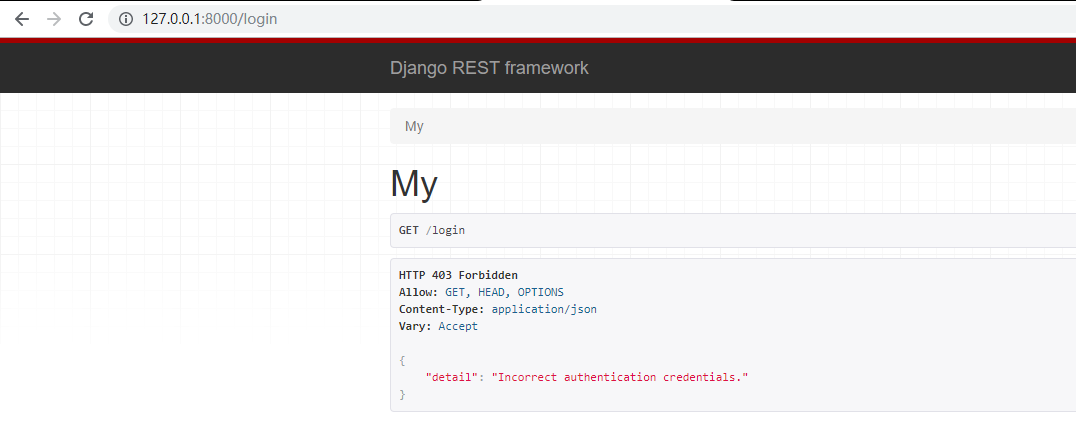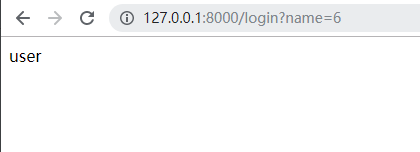django rest framework用户认证
django rest framework用户认证
- 进入rest framework的Apiview
@classmethod
def as_view(cls, **initkwargs):
"""
Store the original class on the view function. This allows us to discover information about the view when we do URL
reverse lookups. Used for breadcrumb generation.
"""
if isinstance(getattr(cls, 'queryset', None), models.query.QuerySet):
def force_evaluation():
raise RuntimeError(
'Do not evaluate the `.queryset` attribute directly, '
'as the result will be cached and reused between requests. '
'Use `.all()` or call `.get_queryset()` instead.'
)
cls.queryset._fetch_all = force_evaluation view = super().as_view(**initkwargs)
view.cls = cls
view.initkwargs = initkwargs # Note: session based authentication is explicitly CSRF validated,
# all other authentication is CSRF exempt.
return csrf_exempt(view)django的类视图是调用内部的as_view方法来实现CBV,在第18行调用了父类的as_view,父类的as_view调用了dispatch方法,这里在ApiView自定义了dispatch
def dispatch(self, request, *args, **kwargs):
"""
`.dispatch()` is pretty much the same as Django's regular dispatch,
but with extra hooks for startup, finalize, and exception handling.
"""
self.args = args
self.kwargs = kwargs
request = self.initialize_request(request, *args, **kwargs)
self.request = request
self.headers = self.default_response_headers # deprecate? try:
self.initial(request, *args, **kwargs) # Get the appropriate handler method
if request.method.lower() in self.http_method_names:
handler = getattr(self, request.method.lower(),
self.http_method_not_allowed)
else:
handler = self.http_method_not_allowed response = handler(request, *args, **kwargs) except Exception as exc:
response = self.handle_exception(exc) self.response = self.finalize_response(request, response, *args, **kwargs)
return self.response和django的dispatch类似,第8,9行对request进行了封装
def initialize_request(self, request, *args, **kwargs):
"""
Returns the initial request object.
"""
parser_context = self.get_parser_context(request) return Request(
request,
parsers=self.get_parsers(),
authenticators=self.get_authenticators(),
negotiator=self.get_content_negotiator(),
parser_context=parser_context
)封装函数内部返回的是Request对象
class Request:
"""
Wrapper allowing to enhance a standard `HttpRequest` instance. Kwargs:
- request(HttpRequest). The original request instance.
- parsers_classes(list/tuple). The parsers to use for parsing the
request content.
- authentication_classes(list/tuple). The authentications used to try
authenticating the request's user.
""" def __init__(self, request, parsers=None, authenticators=None,
negotiator=None, parser_context=None):
assert isinstance(request, HttpRequest), (
'The `request` argument must be an instance of '
'`django.http.HttpRequest`, not `{}.{}`.'
.format(request.__class__.__module__, request.__class__.__name__)
) self._request = request
self.parsers = parsers or ()
self.authenticators = authenticators or ()
self.negotiator = negotiator or self._default_negotiator()
self.parser_context = parser_context
self._data = Empty
self._files = Empty
self._full_data = Empty
self._content_type = Empty
self._stream = Empty if self.parser_context is None:
self.parser_context = {}
self.parser_context['request'] = self
self.parser_context['encoding'] = request.encoding or settings.DEFAULT_CHARSET force_user = getattr(request, '_force_auth_user', None)
force_token = getattr(request, '_force_auth_token', None)
if force_user is not None or force_token is not None:
forced_auth = ForcedAuthentication(force_user, force_token)
self.authenticators = (forced_auth,)Request对象的初始化函数,它将原生django的request对象赋值给self._request,所以在ApiView视图中想使用原生的request要用request._request来使用
- 查看self.authenticators
- self.authenticators等于传进来的authenticators
- 在ApiView内部定义了get_authenticators方法,它会被authenticators来接受
def get_authenticators(self):
"""
Instantiates and returns the list of authenticators that this view can use.
"""
return [auth() for auth in self.authentication_classes]这个方法回去self.authentication_classes里面找定义好的对象再将其实例化
- 定义自定义验证类
from rest_framework.views import APIView
from django.http import HttpResponse
from rest_framework.authentication import BaseAuthentication
from rest_framework.exceptions import AuthenticationFailed class MyAuthentication(BaseAuthentication):
def authenticate(self, request):
if not request._request.GET.get('name'):
raise AuthenticationFailed
return ('user', None) def authenticate_header(self, request):
pass class MyView(APIView):
authentication_classes = [MyAuthentication] def get(self, request):
user = request.user
return HttpResponse(user)验证类继承BaseAuthentication(不继承也可以,但都要实现authenticate)方法,在authenticate里面实现用户的认证,最后返回一个元祖,第一个元素为user对象,该对象被request.user接受, 第二个元素会被request.auth捕捉
- 效果


django rest framework用户认证的更多相关文章
- Django Rest framework 之 认证
django rest framework 官网 django rest framework 之 认证(一) django rest framework 之 权限(二) django rest fra ...
- Django 中的用户认证
Django 自带一个用户认证系统,这个系统处理用户帐户.组.权限和基于 cookie 的 会话.本文说明这个系统是如何工作的. 概览 认证系统由以下部分组成: 用户 权限:控制用户进否可以执行某项任 ...
- Django rest framework 的认证流程(源码分析)
一.基本流程举例: urlpatterns = [ url(r'^admin/', admin.site.urls), url(r'^users/', views.HostView.as_view() ...
- Django Rest Framework用户访问频率限制
一. REST framework的请求生命周期 基于rest-framework的请求处理,与常规的url配置不同,通常一个django的url请求对应一个视图函数,在使用rest-framewor ...
- Django组件之用户认证组件
一.auth模块 from django.contrib import auth django.contrib.auth中提供了许多方法,这里主要介绍其中的三个: 1.1 .authenticate( ...
- Django Rest Framework之认证
代码基本结构 url.py: from django.conf.urls import url, include from web.views.s1_api import TestView urlpa ...
- 使用django实现自定义用户认证
参考资料:https://docs.djangoproject.com/en/1.10/topics/auth/customizing/ 直接拉到最后看栗子啦 django自定义用户认证(使用自 ...
- 09 Django组件之用户认证组件
没有学习Django认证组件之前使用装饰器方法 from django.shortcuts import render, HttpResponse, redirect from app01.MyFor ...
- Django组件之用户认证
auth模块 1 from django.contrib import auth django.contrib.auth中提供了许多方法,这里主要介绍其中的三个: 1.1 .authenticate( ...
随机推荐
- C++ 顺序表练习
#include <stdio.h> #include <stdlib.h> #include <string.h> struct Array //定义一个数据存储 ...
- 环境变量之classpath配置和临时配置
前言 本篇文章介绍classpath环境变量的配置和一个环境变量配置的技巧:临时配置path环境变量. 正文 classpath环境变量配置 在上完了"Hello World"这堂 ...
- Elasticsearch批量插入时,存在就不插入
当我们使用 Elasticsearch-py 批量插入数据到 ES 的时候,我们常常使用它的 helpers模块里面的bulk函数.其使用方法如下: from elasticsearch import ...
- 分布式框架Celery(转)
一.简介 Celery是一个异步任务的调度工具. Celery 是 Distributed Task Queue,分布式任务队列,分布式决定了可以有多个 worker 的存在,队列表示其是异步操作,即 ...
- Hadoop集群搭建(二)~centos6.8的安装
这篇记录在创建好的虚拟机中安装centos6.8 1,在虚拟机界面-选择编辑虚拟机设置 2,CD/DVD,选择使用ISO映像文件,找到安装包的位置,确定 3,回到虚拟机的界面,开启此虚拟机 4,安装 ...
- 谈谈一些逻辑相同,性能差异却很大的sql
总结写在前面: 1. 本篇讲述了三个例子,其本质都是揭示了若对索引字段做函数操作,可能会破坏索引值的有序性,由此优化器就决定放弃走树搜索功能. 2. 由第1点提供了一个优化思路,即我们能否避免或转化s ...
- [BUG]微信浏览器 iOS input 失焦页面不回弹
描述 ios13. ios中,input唤醒软键盘后,body整体会向上滚动,如果input框输入完成确定后,如果页面在最底部则不回弹,导致fixed布局实际效果上移,fixed布局内按钮点不到. 如 ...
- JVM 参数(转)
Herry灬凌夜 转自:https://www.cnblogs.com/wuyx/p/9627542.html 常用的JVM配置参数 一.Trace 跟踪参数 在Eclipse中,如何打开GC的监控 ...
- 零售CRM系统开发的核心功能
在零售行业中,客户关系管理系统是一个包含销售,市场营销和客户服务流程的中央枢纽.它为企业所有者提供了一种可以结合所有与销售有关的问题并管理销售流程的有效工具.零售CRM可以留住客户,提供个性化的一流客 ...
- 【原创】(六)Linux进程调度-实时调度器
背景 Read the fucking source code! --By 鲁迅 A picture is worth a thousand words. --By 高尔基 说明: Kernel版本: ...
